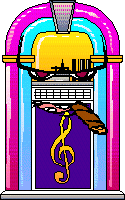
Uh, oh! You either don't have the Flash plug-in installed, or you have it disabled.
Otherwise, there'd be a cute lil' streaming audio player on the left, rather than this message.
Hans Werner Henze
„La Miracle de la Rose“
„An eine Äolsharfe“
CD
(Ars Musici, 1991)

Hans Werner Henze has been featured on the jukebox before, but it's LGBT History Month, he's one of my favorite composers, and he's openly gay. This time 'round I'm gonna let the liner notes for this piece do the talking for me. I will say, though, that in addition to Henze, Jean Genet, the author of the book Miracle de la Rose, which Henze has here transformed into music, was also openly gay. Henze himself conducted this recording, which features Ensemble Modern joined by Hans Deinzer on clarinet.
Language becomes music – music becomes language
Hans Werner Henze has written two pieces with the subtitle ”Imaginary theatre“: ”El Rey de Harlem“ in 1979, after a text by Federico Garcia Lorca, and two years later ”Le Miracle de la Rose“, a musical evocation of the autobiography of the same name written by the French poet and playwright Jean Genet in prison in 1943. Both works take outsiders in society as their subject, characters who are both victims and wrongdoers at one and the same time. While the Lorca piece uses a voice to convey the content of the text, the piece entitled ”Imaginary theatre II“ (”Miracle“) goes one step further: the poetic content is transposed entirely into instrumental terms, with the solo clarinet being identified with the principal character, the sixteen-year-old twofold murderer Harcomone, who awaits execution. ”It is hardly surprising that the most wretched human life is described with especially beautiful words“ – this hypothesis of Genet's is adopted by Henze too, as he immerses himself in a private world precariously ruled by violence and the addiction to beauty. Henze is not interested in making philanthropic gestures of sympathy from the outside, nor in artistic indulgence in a macabre, surrealistic and almost exotic scenery of homosexuality and crime; what he aims to achieve is the deeper sympathy that goes hand-in-hand with the utmost humiliation and perversion. Beauty in a damaged life is a transcendental moment, a glimmer of hope and utopia – a sign of salvation from the hopelessly functionalistic world of normal people and conformists. It was in this sense that Jean-Paul Sartre regarded Genet – both the poet and the man – as a „saint“.
Henze's composition is divided into seven movements. It blends the model of the Baroque suite with the character of a virtuoso clarinet concerto. Many of the other thirteen instruments represent figures from the Genet book – the judge expresses himself through the trumpet, the priest is represented by the horn, the trombone stands for the lawyer, the poet himself is identified by the bass clarinet, while the heckelphone stands for the executioner. The introductory ”Entrée“ evokes a menacing mood which is dispelled time after time by the energy of Harcomone's daydreams (especially in the flights of fancy in the ”Air“). At the end of the Mediterranean hues of the ”Chansons provençales“, the screeching of the E flat clarinet depicts Harcomone's execution in dramatic colours. Like any programme music of true quality, ”Le Miracle de la Rose“ can also be listened to as absolute music. But the listener who also bears the close associations with Genet's book in mind will of course learn a great deal more about the composer Hans Werner Henze.
Pictures or language have often served as the inspiration for the compositions of Hans Werner Henze. Musical settings of texts account for a significant part of his work, but no less important are those works whose connection with the verse does not actually feature the sung presentation of the text. In these compositions, Henze is not content to merely reproduce the substance of a text atmospherically in terms of musical notes, nor does he simply illustrate it in 'programme music' fashion. Henze prefers to create structural musical convergences and equivalents. He follows the course of the words mimetically in note form, reconstructing the rhythm of the verse set and its structural subdivisions in the forms of his music. Henze, who takes a great interest in semiotics and wishes his music to possess symbolic value and precise linguistic character, refers deliberately to ”research“, when he is making a detailed study of poetry that he plans to transform into music. He first made this manner of working his own in 1953, when he composed his ”Ode to the West Wind“, the instrumental 'imagination' of a poem by Shelley, set for cello and orchestra. As a man of the theatre, he is also concerned to give his literary (or pictorial) subject something along the lines of a dramatic form by making a musical 'stage production' of it. In this way, apparently concertate works take on a dramatic aspect, too.
Hans-Klaus Jungheinrich
(translation: Clive Williams)
NOTA BENE: I know the punctuation and quotation marks above look odd. I have recreated it exactly as it appears in the booklet.
:-P


1 biased opinion:
Im not exactly sure the why of it, but this music makes me "see" ballet. Weirdy. It has undertones to me of Russian classical, very dark and depressed.
Post a Comment